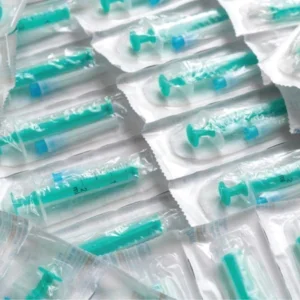Over the past three decades, biologics have grown from a new – and decidedly niche – class of drugs to a cornerstone of the pharmaceutical industry. From insulin products like Sanofi’s Lantus, to cancer therapies like Roche’s Herceptin, ever more biotech therapies are being indicated for life-threatening diseases.
There is also significant scope for future growth. Currently valued at more than $200 billion, the commercial biotech industry is expected to hit $300 billion by 2018. By then, large molecules of this kind will constitute seven of the top-ten bestselling pharma products in the world, and 26 of the top 50. Insulated from the threat of generics, new therapies abound.
This in turn means that large molecule clinical trials are increasing. And while that is good news for biotechnology, it does pose difficulties for those who deal with clinical trial logistics. Notably, these drugs are highly sensitive products which can be rendered unusable by the briefest of temperature excursions.
When removed from ambient conditions (typically between 2 and 8°C), such drugs tend only to maintain their integrity for a few minutes. They may be damaged by excessive heat or cold, and will need to be discarded if their efficacy comes into question. Budgets, however, are notoriously tight and sponsor companies cannot afford to waste a single shipment.
It stands to reason that the cold chain has become a major point of focus. Clinical trial logistics are a complex beast: with study sites often dispersed across the globe, shipments need to reach remote locations under stringent time constraints. Project managers will also need to return unused medicines, as well as shipping medical samples to centralised analytical laboratories.
These challenges are compounded when cold chain is required. In this instance, the shipments must stay intact from start to finish, with no disruptions in the process. Whether you are dealing with biologic drugs, or other temperature-sensitive materials (tissues, proteins, antibodies, vaccines or blood-plasma products) you need careful strategies in place. Your aim: to transport your product to the investigator sites within established stability limits.
Here, we detail some of the factors a sponsor company should bear in mind as they plan out their clinical cold chain.
What sort of cold chain solutions are available?
A vast array of temperature-control solutions are available, with the preferred option dependent on the specifics of the shipment. One widely used system is the active-cooling shipping container, a form of refrigeration unit typically powered by electricity or battery. These are ideal for large shipments and are considered to be particularly secure, as well as convenient – being a leased container, no warehousing is required.
These configurations, however, can be expensive, energy-intensive and inflexible, and given their size cannot easily be scaled to meet the varying needs of investigator sites. For this reason, many shippers choose to use passive containers, which have generally been prequalified to remain at a particular temperature for a given period of time. Frequently, these are based upon phase-change materials (PCMs) that irrespective of changing external conditions keep the shipments consistently hot or cold.
Passive coolers are typically lightweight, eco-friendly and non-toxic, and extend the length of time a product can remain in transit without straying from the specified temperature parameters. Because different coolers vary dramatically in cost, however, it is worthwhile shopping around.
Other options include dedicated refrigerated vehicles, which are useful but expensive, and pose the risk of cross-contamination if the van is shared with other customers. Then there are newer solutions, such as dry-vapour liquid-nitrogen shippers with integrated tracking and management systems. Whatever the desired option, it’s important to ensure the container has been tested out under appropriate conditions, and has been qualified for maintaining the necessary temperature range.
Monitoring solutions are essential too, helping the project manager keep tabs on their shipment and observe it from afar. Ideally speaking, these solutions would send real-time, constant temperature information, alongside shipment tracking data. This will enable adjustments to be made in the case of any problems or discrepancies.
Suitable technologies include GPS and radio-frequency identification (RFID) chips, which expand monitoring capabilities by allowing a delivery agent to scan a shipping container and transmit data instantaneously. While some such solutions are built into the shipping container, and others are external, all perform the same, highly critical function.
What are the costs at stake?
The financial implications should not be understated. Because the clinical trial itself, and the drug being tested, are so costly, there are large sums pending on each delivery. You are dealing with relatively small quantities of test products, and yet each one has tremendous potential to make or break a trial.
This means, if best practice is not followed, the costs involved can be hugely detrimental. Naturally, the cold chain itself can prove expensive, especially when you factor in packaging, transportation, process qualification and monitoring. Adopting a robust solution, however, is likely to pay off in the long run. For this reason, companies are investing in their cold chains at a growing rate.
According to the fifth annual forecast by Pharmaceutical Commerce, released in April 2014, cold chain accounts for around 13% of all biopharma logistics spending (or $8.4 billion in a total global market of $64.0 billion). $5.6 billion of this total goes on transport, and the remaining $2.8 billion on specialised tertiary packaging and temperature-controlled solutions.
The report predicted that as we move towards 2018, this market will grow at a compound rate of around 6% a year. This expansion will be relatively steady, with the slowdown observed in recent years not expected to continue.
What sort of challenges and opportunities are posed by emerging markets?
This growth will be fuelled, above all else, by expansion into emerging markets. Most of the growth in sales will be observed outside the traditional markets of North America and Western Europe, and we are likely to see a particular surge in Asia. As sponsors attempt to cut costs, not to mention expanding their reach into more diverse and representative populations, the contract research organisation (CRO) industry is booming across the globe.
According to a recent study by IMARC Group, ‘Global Healthcare Cold Chain Logistics Market Report & Forecast (2013-2018)’, this trend looks set to continue.
As one analyst put it: "In order to expand their revenues, global pharmaceutical and biotech companies are looking towards increasing their customer base from their core markets (US and Western European countries) to other regions around the world.
"In order to launch drugs in certain countries such as Japan, regulatory agencies make it mandatory for companies to conduct clinical trials in that country. This is expected to create a huge demand for efficient packaging, storage and transportation and clinical trials materials between different regions."
Theoretically, these markets are less expensive than their European or American equivalents, but the cold chain may require greater investment upfront. In addition to applying careful transportation strategies, project managers need to familiarise themselves with local regulation and import licensing laws.
After all, if the authorities have any reason to question a shipment, they will not hesitate to hold it in an uncontrolled fashion, often to the point of compromising the temperature integrity.
What regulatory requirements are there?
As the market for cold chain solutions has increased, so too has the number of regulations. Today, the cold chain is governed by carefully specified logistical requirements, with government and industry alike putting forth their own practical guidelines. These cover transportation processes, sensors and packaging, among others, and fall under the banner of good distribution practices (GDPs).
Last year saw the implementation of the EU’s new ‘Guidelines of 5 November 2015 on Good Distribution Practice of Medicinal Products for Human Use’, which replaced the previous document, dating from 1994. Many other regions have tweaked their guidelines to keep pace with changing times (China and Saudi Arabia among them) and the World Health Organization has revisions in progress.
The regulatory environment is changing fast. We only need look at dry ice, for instance, which is coming under increasing amounts of scrutiny. A number of airlines and couriers are placing restrictions on the use of dry ice as a refrigerant, dissuaded by the costs and liabilities involved. As measures of this type become more common, it pays to stay abreast of the latest requirements.
As an essential component of many clinical trials, cold chain remains high up the agenda. While there are challenges – not least those relating to globalisation and regulation – careful planning can ensure a sponsor company surmounts whatever hurdles come its way.





